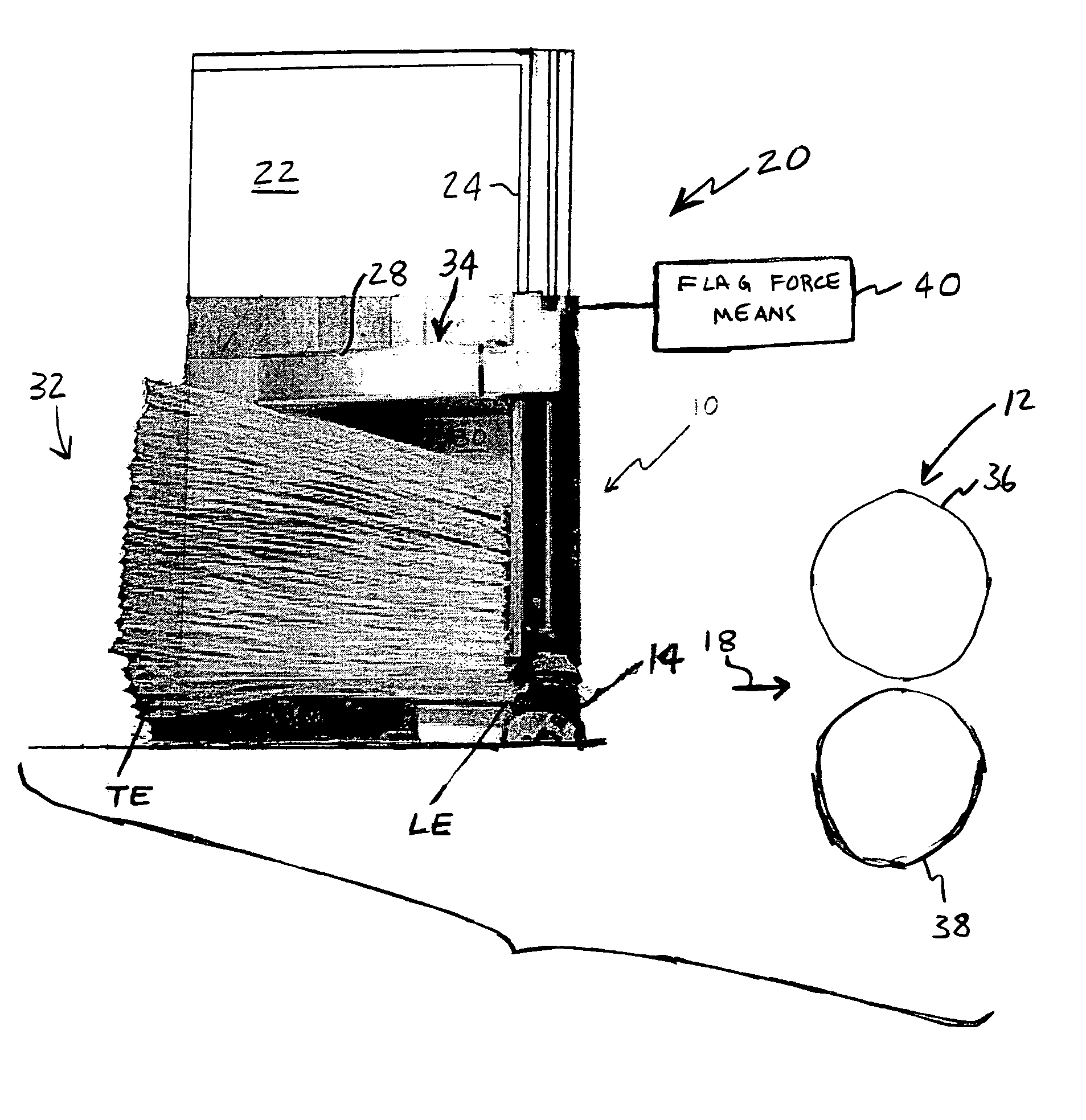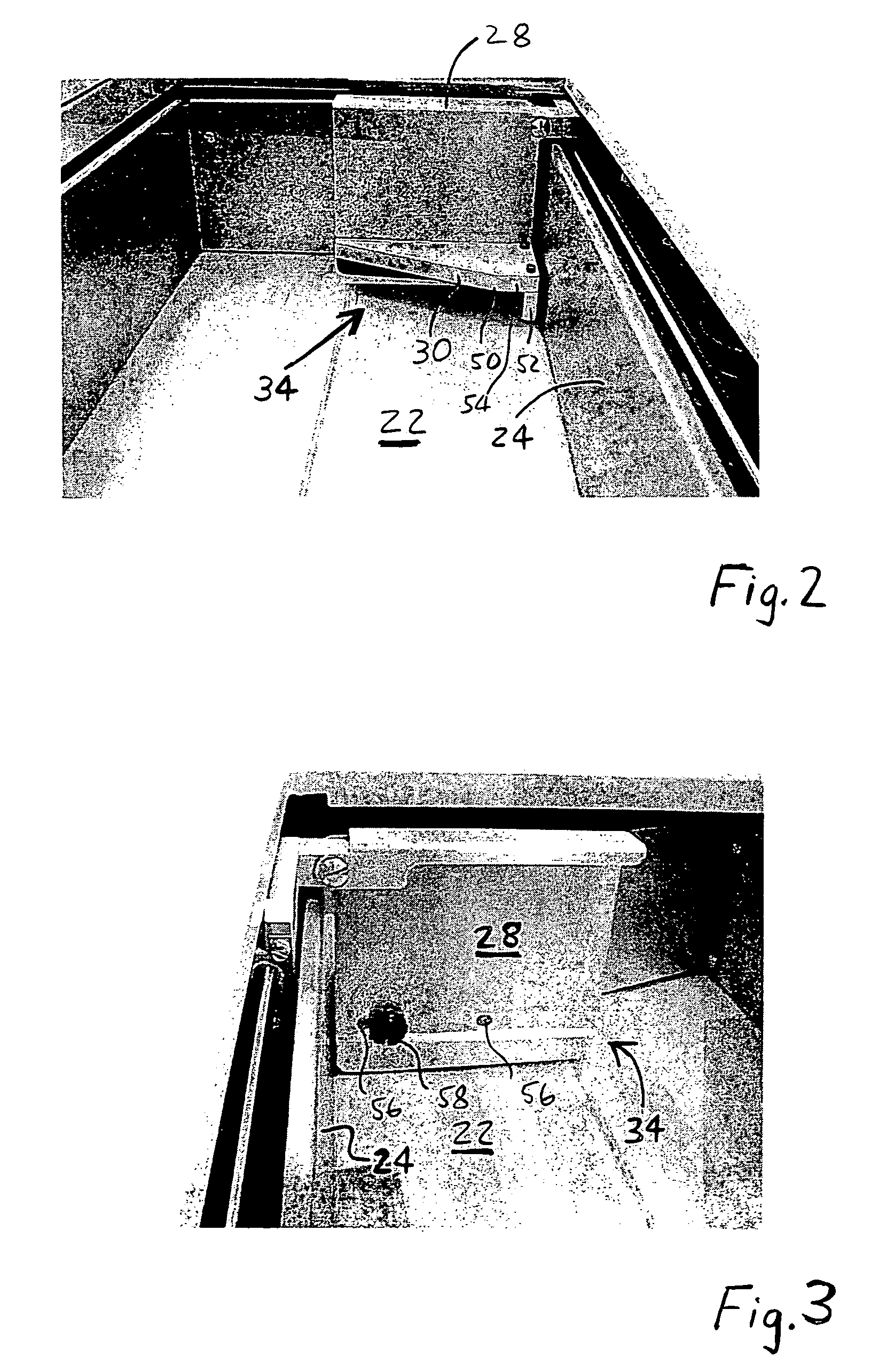Flag block for a document feeding system
a document feeding and flag block technology, applied in the direction of transportation and packaging, thin material processing, article separation, etc., can solve the problems of detectors, large hopper capacity, and difficulty in consistent presentation, and achieve the effect of reducing the cos
- Summary
- Abstract
- Description
- Claims
- Application Information
AI Technical Summary
Benefits of technology
Problems solved by technology
Method used
Image
Examples
Embodiment Construction
[0026]FIG. 1 illustrates a system for feeding and transporting documents. The system includes a feeder stage 10 and a transport stage 12. The feeder stage 10 includes a feeder including nudger belt 14. Transport stage 12 is downstream of feeder stage 10, with arrow 18 pointing in the downstream direction. A document leading edge LE is the more downstream edge, while the trailing edge TE is the more upstream edge. Feeder stage 10 includes hopper assembly 20. Hopper assembly 20 includes a hopper floor 22 and hopper sidewall 24. Hopper assembly 20 further includes document stack supporter or flag 28. Flag block 30 is attached to flag 28. A stack 32 of documents, the documents being envelopes, engages hopper floor 22, flag 28 and flag block 30.
[0027]With continuing reference to FIG. 1, envelope stack 32 is shown adjacent to hopper sidewall 24. The components shown in FIG. 1 are exemplary and alternative arrangements are possible as known to those skilled in the art. For example, the fee...
PUM
 Login to View More
Login to View More Abstract
Description
Claims
Application Information
 Login to View More
Login to View More - R&D
- Intellectual Property
- Life Sciences
- Materials
- Tech Scout
- Unparalleled Data Quality
- Higher Quality Content
- 60% Fewer Hallucinations
Browse by: Latest US Patents, China's latest patents, Technical Efficacy Thesaurus, Application Domain, Technology Topic, Popular Technical Reports.
© 2025 PatSnap. All rights reserved.Legal|Privacy policy|Modern Slavery Act Transparency Statement|Sitemap|About US| Contact US: help@patsnap.com



